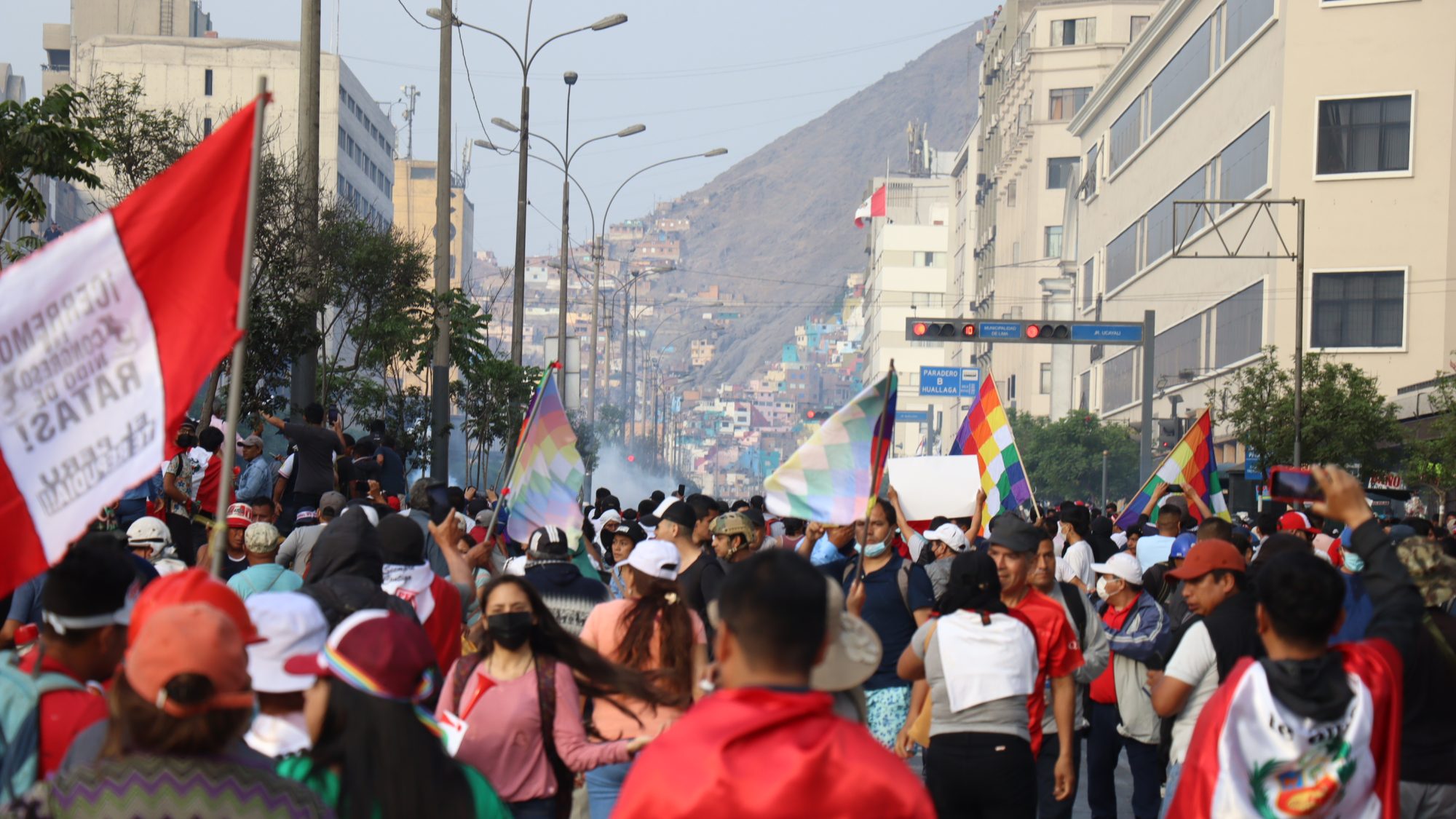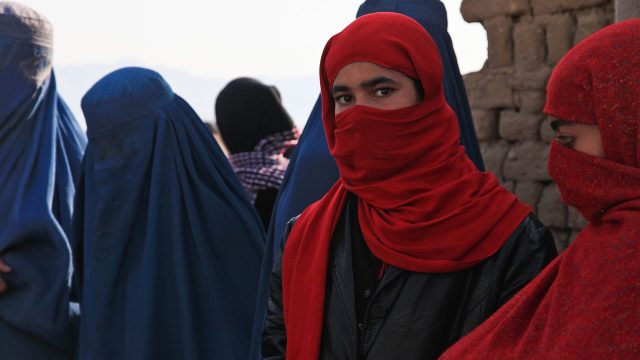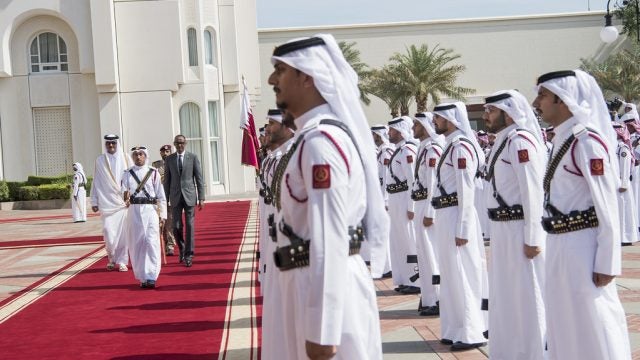
Title: Political Protests in Peru: Causes, Complications, and Remedies
Peru’s recent protests have been the most intense in the country in at least a century, leaving a tragic toll of at least sixty human lives. The causes of the protests are both the country’s recent dysfunctional politics and its long-standing, deep ethnic divisions. Although the response by Peru’s government—and, in particular, by its Congress—has been seriously flawed, uncertainties abound; it is appropriate that the international community show restraint. However, the international community can help by intensifying its calls for the investigation and prosecution of human-rights violations and, over the longer term, for efforts to overcome ethnic exclusion.
The Nature and Causes of Peru’s Recent Protests
On December 7, 2022, severe confrontations began between protesters and security forces; although the confrontations abated during the holiday season, they re-ignited in January and early February and abated again in late February. Challenging Peru’s police and military, protesters blocked major highways and tried to take over key airports. The protesters also blocked access to Peru’s major tourist destination, Machu Picchu.
The toll of the confrontations has been severe. In the first weeks of the protests, security officers were using live ammunition at close range. It was estimated that as of mid-March, the security force killed 48 civilians and injured almost 1,300 civilians amid the use of excessive force. In addition, one police officer was killed and at least 368 were injured by the protesters. There have been more deaths in Peru to date than in the protests of the last four years in Chile, Colombia, or Ecuador, each of which caused fewer than fifty deaths. Amid the road blockages and airport closures, Peruvian commerce has also been hit hard. As of the end of February, damages have been estimated to be $950 million in production alone and considerably more in infrastructure.
The protesters’ demands are primarily political. The top demand—echoed by the vast majority of Peruvians—is for new presidential and congressional elections to be held in late 2023 or early 2024. Peru’s previous elections had been held before widespread vaccination against COVID-19, limiting political campaigns, pre-election polls, and neighbors’ strategizing. As the two candidates who reached the runoff were at ideological extremes without broad popular support, many Peruvians wanted a do-over from the start. In addition, President Dina Boluarte had been the vice-president for a far-left party but had shifted to the right; she is perceived as a traitor by many on the left. Although elections are not due until 2026, electoral experts believe that they could be successfully organized this year. Protesters demand that Boluarte resign, in part due to her failure to stop human-rights violations by the security forces and in part because her resignation would trigger new elections within six months. According to a January poll, large majorities of Peruvians support early elections and Boluarte’s resignation, with approximately 93 percent support for the former and 73 percent for the latter.
Yet, the causes of the protests are not solely political. In contrast to recent protests in other Andean countries, the major site of the protests is not the country’s capital but rather the southern highlands: a disadvantaged and largely indigenous region that is home to Cusco, the capital of the Incan civilization. The peoples of Peru’s southern highlands have constantly suffered ethnic discrimination by the more Caucasian peoples of Lima. The region was the political base of the Shining Path, a violent Maoist insurgency that sparked an internal war costing approximately 70,000 Peruvian lives in the 1980s and early 1990s. The deaths were not amid protests but rather targeted assassinations by clandestine insurgents and attacks by the security forces against entire communities suspected of Shining Path sympathies.
Especially for Peruvians of indigenous or mixed descent, the impeachment of Castillo on December 7 was an emotional blow. Castillo was a rural schoolteacher of indigenous descent, and although the peoples of the southern highlands were far from oblivious to Castillo’s incompetence and likely corruption, majorities of highlanders likely identified with him. While majorities of highlanders also knew Castillo’s December 7 attempted “autogolpe” (the announcement that he would close Congress and rule by decree, which prompted his impeachment) was unconstitutional and undemocratic, they believed that Congress had been obstructionist and had not given Castillo a chance.
The Boluarte Government’s Response to the Protests
Arguably, the most serious failure of the Boluarte government was to not clearly repudiate the egregious brutality of the security forces in the early weeks of the protests nor call for investigations and prosecutions. Unsurprisingly, citizens’ anger at the security forces’ atrocities further fueled the protests.
Still, the government was facing protesters who were throwing rocks and igniting fires as they stormed airports and blocked roads. The government likely worried that if it criticized the security forces, they would retaliate by not venturing beyond their stations. In addition, it can be difficult for a president to determine responsibility and assign blame. For example, in mid-January, amid a major protest in Lima, Peru’s police raided a premier university, the National University of San Marcos, where protesters had sought shelter. The police were severely abusive and detained more than 100 people, many of whom had not been participating in the protests. Yet, responsibility for the arbitrary use of force was unclear.
It was difficult for the government to engage in dialogue with protesters and meet their demands for various reasons. First, in contrast to most protest movements, no person or organization claimed leadership. By every indication, the government was eager to engage in dialogue—but with whom? The protesting groups were diverse. By every indication, the government was eager to engage in dialogue—but with whom? The protesting groups were diverse. The government increasingly reached out to the governors in Peru’s southern highlands, with some success, but they were not the protest leaders. Boluarte could have simply stepped out, with her security detail, to meet protesters and invite a subset of them to talk—which at a minimum would have changed the subject—but she did not.
The protests also posed difficult challenges because of the highly political character of the demands. Whereas a key catalyst of the protests in Chile was a metro-fare hike and in Colombia a tax increase—policies that could be changed relatively readily—Peruvian protesters’ demands require politicians to rise above their personal interests for the common good. The incumbent legislators would not be able to run for re-election in the event of early elections and have accordingly to date rejected these calls.
While most Peruvians are irate at the legislators’ disregard for public opinion, some politicians counter that new elections would not yield superior results; Peru’s political parties remain fragmented. However, this argument is made largely by the leaders of less well-organized parties. Although Peru’s 2021 election did not yield a candidate who enjoyed broad support, this election was held amid COVID-19 when political campaigning was limited and opinion polling was deficient, impeding Peruvians’ strategic votes. Further, political leaders looking to the future could advance reforms such as enabling the re-election of legislators and mandating an additional round of presidential elections among the top-five candidates if no candidate wins more than 30 percent in the first round.
It is difficult to neatly assess not only the Boluarte government’s response to the protests but also what would happen if she were to resign or be impeached. As mentioned above, if she departs, elections would be triggered within six months. However, upon her departure, the presidency would pass to the President of the Congress, José Williams, a retired military commander from a right-wing party—hardly more palatable to the protesters than Boluarte. And while early elections would occur, some legislators have argued that these elections would be only presidential, not legislative—and Peru’s Congress is reviled even more than its president.
The Response of the International Community
Due to the complexities and uncertainties of Peru’s current political moment, restraint by the international community is appropriate. Overall, the Biden administration has shown such restraint, expressing tepid support for the Boluarte government. However, there are steps that the Biden administration could pursue. The hemisphere remains committed to the principles of human rights and ethnic inclusion, and the Biden administration could strive more intently to promote these principles.
Unfortunately, in 2023, the hemisphere is divided about the legitimacy of numerous governments and there is little likelihood that it would unite behind a recommendation for the future of Peru’s government. Whereas after the 1992 “autogolpe” by Peru’s then-President Alberto Fujimori the Organization of American States (OAS) called for a hemispheric meeting and ultimately achieved considerable concessions from Fujimori, such an outcome is impossible today.
There are serious divisions among the countries in the OAS. In mid-December, the presidents of Argentina, Bolivia, Colombia, and Mexico declared their support for Castillo. Furthermore, in February, Mexico’s president Andrés Manuel López Obrador (“AMLO”) announced that he would not transfer the presidency of the Pacific Alliance to Peru because the Boluarte government was not legitimate. Critics countered that AMLO’s decision was counter to the principle of non-intervention and respect for a country’s sovereignty that he has long endorsed. Of course, for Peru’s part, the support for Castillo was anathema, and the diplomatic tensions have been at the breaking point.
However, the hemisphere can come together on international human rights principles. Commendably, the OAS’s Inter-American Commission on Human Rights (IACHR) carried out a January observation visit to Peru to investigate human-rights violations, including those at the National University of San Marcos.The Biden administration’s statements have cited the importance of human rights and accountability for violators, but arguably only mildly. Hopefully, after the release of the IACHR’s report in several weeks, the Biden administration will both encourage the OAS to follow-up and highlight more emphatically its own concerns.
A longer-term commendable initiative by the Biden administration would be to propose hemispheric discussion of policies for ethnic inclusion. In contrast to efforts for gender inclusion—which have been very salient throughout the hemisphere and have advanced in recent decades—efforts for ethnic inclusion have been limited. Even the discourse about ethnic inclusion in the hemisphere is deficient; there is an emphasis upon indigenous peoples, but in Latin America, color is a continuum from white to indigenous that includes peoples from Africa, the Middle East, and Asia. As a result, the facts about ethnic exclusion—the numbers of judges, legislators, or executives by ethnicity, for example—are rarely reported and rarely included in assessments of democracy or social justice.
In hemispheric discussion of policies for ethnic inclusion, it is imperative that the United States highlight its own grim history of slavery and segregation and the intense current controversies in the country today about the teaching of race and gender. Still, Peru is far from the only Latin American country wracked by ethnic exclusion and injustice; the challenge is near the top of the agenda for the region’s leftist presidents in Brazil, Bolivia, Chile, and Colombia. Indeed, it is possible that discussion of this challenge could bring the Biden administration together with Latin America’s leftist leaders. The formal venue would be the OAS, but ad hoc efforts, including civil society, business groups, academia, and journalists would be welcome. Funds could be provided by the U.S. Agency for International Development.
The Prospects for Stable, Democratic Governance
In recent years, political turbulence has been the norm in much of the world. In most countries and certainly Peru, ideological polarization and anti-democratic norms have intensified. The reasons are numerous, including economic downturns, the severe toll of the pandemic, serious corruption scandals, the expansion of social media, and, in the case of Peru, the very problematic 2021 election.
Yet, between 2001 and 2016, Peru enjoyed considerable democratic stability as well as robust economic growth and considerable redress of inequality and poverty. This can happen again. Very recently, interim President Francisco Sagasti (November 2020-July 2021) governed capably and enjoyed broad popular support.
Currently, Peru’s protests have subsided. It appears that the Boluarte government is striving to achieve professional conduct by the security forces and to work more closely with regional governments to accommodate popular demands. It also appears that Boluarte has established considerable ties with a spectrum of political forces, especially forces on Peru’s center and right. Further, in March 2023, Peru was hard hit by climate disasters, and the public’s attention shifted. Yet, Peru is a tinderbox; in the event of new failures by the Boluarte government, protests are likely to erupt again.
Despite the very serious challenges to democratic governance in Peru in recent years, over the last hundred years Peru has come a long way—politically, socially, and economically. Advances can be made again, and these advances can be encouraged through commitment by the international community to the principles of human rights and ethnic inclusion.
. . .
Cynthia McClintock is Professor of Political Science and International Affairs at George Washington University. She is the author of numerous articles and three books, including most recently Electoral Rules and Democracy in Latin America (Oxford University Press, 2018). In 1994-95, she was the President of the Latin American Studies Association and, in 2019, she won the Lifetime Achievement Award of the Latin American Studies Association’s Peru Section.
Image Credit: Mayimbú, Wikimedia Commons
Recommended Articles

For many in the Global South, the ‘American Peace’ or Pax Americana is a mirage amid a world of war, economic hardship, forced migration, environmental calamity, and political repression while…

The United Nations is scheduled to host its third meeting of international envoys to Afghanistan in Doha on June 30, 2024. This meeting aims to discuss and address significant…

Qatar plays a crucial role in mediating conflicts in the Middle East region. Its engagement in negotiations with diverse stakeholders–including countries like Lebanon, Sudan, and Libya and non-state actors such…